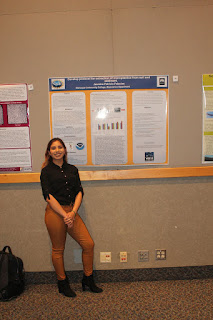Blog Post Week 2
- Problem or observation: Increasing amount of microplastics debris in both marine and freshwater systems has become an emerging issue affecting aquatic life.
- Research question: Is there a way to dissect microplastics from the seven known plastics?
- Background information:
- Micro Plastics are plastics particles smaller than 5.0 mm in size.
- There are two main ways microplastics are formed and enter the body of water: primary and secondary microplastics.
- Primary microplastics consist of manufactured raw plastic material; virgin plastic pellets, scrubbers, and microbeads that enter the ocean via runoff from land.
- Secondary microplastic occur when larger plastics items enter a beach or ocean and undergo mechanical, photo and/ or biological degradation. The degradation breaks larger pieces into progressively smaller plastic fragments which eventually become undetectable to the naked eye.
- Microplastics have many use; personal care product such as exfoliants in face scrubs
- Also used to deliver drugs in some medical applications, Fiber that shed from synthetic clothing and rope are microplastics.
- Though the impact of microplastics on wildlife is not very well understood, various of organisms both vertebrates and invertebrates have been found to digest microplastics.
- Scientist are concerned that organisms ingesting plastics debris may be exposed contaminants sorbed to the plastics
- Plastic Debris provides a sink and a source for chemical contaminants.
Hypothesis:
The amount of microplastics will differentiate depending of where water is collected.
5 Scholarly sources:
Masura, J., Baker, J., Foster, G., & Arthur, C. (2015, June ). Laboratory Methods for the Analysis of Micro-plastics in the Marine Environmentarine En. Retrieved February 21, 2017, from NOAA Microplastics methods manual, https://marinedebris.noaa.gov/sites/default/files/publications-files/noaa_microplastics_methods_manual.pdf
Oceanic, N., & Administration, A. (2016, April 13). What are microplastics? Retrieved February 21, 2017, from What are micro-plastics? - National Ocean Service - NOAA, http://oceanservice.noaa.gov/facts/microplastics.html
Programme, U. N. E. (2003). About the UNEP year book. Retrieved February 21, 2017, from Micro- plastics Brochure - UNEP, http://www.unep.org/yearbook/microplastics.asp
Microplastics, I., & Reserved, A. R. (2010). Microplastics Inc. - insert molded filters engineered for quality. Retrieved February 22, 2017, from Micro-plastics Inc. - Insert Molding Engineered for Quality, http://www.microplasticsinc.com/filters.php
USGS Science for a changing world. (2016, March 16). Microplastics in our nations’s waterways. Retrieved February 21, 2017, from Micro- plastics in our Nation’s Waterways, https://owi.usgs.gov/vizlab/microplastics/

Hey Jasmine! It’s crazy to think about how there are microplastics literally around us everyday. It’s good to hear that you are researching a way, if there is a way, to remove microplastics from plastics. Not many people, including myself, have heard of microplastics or know much about them so conducting even more research will draw more attention to it. Good luck on your project and I hope you find a way to dissect microplastics from plastics!
ReplyDelete